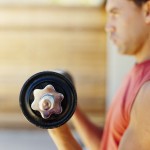 Not having enough time has become one of the biggest excuses, for not being able to fit in a workout. As a trainer, one of my jobs in recent years has been helping my clients manage their time and work/life balance better so they see it actually IS possible to fit in quick effective workouts! And we all know the endless positive side effects of these…Yet on the other hand, so many who DO find the time end up not actually making the most
Not having enough time has become one of the biggest excuses, for not being able to fit in a workout. As a trainer, one of my jobs in recent years has been helping my clients manage their time and work/life balance better so they see it actually IS possible to fit in quick effective workouts! And we all know the endless positive side effects of these…Yet on the other hand, so many who DO find the time end up not actually making the most
Whether you have a personal trainer or not, what are the workouts you do on your own like? Are they as time efficient as they could be?
Here are 3 ways to guarantee a time efficient and effective workout:
1. Schedule your workouts. Look at your weekly routine to decide the most realistic time with the least chance of distraction or disturbance. Once you have determined this, treat your workouts as essential meetings with someone whom you cannot afford to cancel. If you value your health, mind and wellbeing then you will have no trouble viewing and scheduling them this way!
2. Set a timer. Say to yourself for this period of 20, 30 or 40 minutes, I am going to train with no distractions. Then set an alarm. If you are using your phone or iPad, put them in flight mode. If you have young children, perhaps try this during nap or school time.
3. Change the variables. Meaning your rest time, number of reps/sets, exercises or order – every workout you do should be slightly different. In doing so, you’ll trick your body into working harder as it will not have a chance to get used to what you are doing!
If you attend a gym or health club, think how many people you see dawdling, reading magazines, chatting to their friends…or perhaps not even setting foot in the gym and going straight to the coffee lounge!
Don’t get me wrong, it’s great to socialise but we all want results from our workouts, right? So if you have a tight schedule, try these tips to always have time for a workout! Happy training and have fun!
Gen Levrant is an Advanced Personal Trainer and weight-loss specialist. She runs a private functional training studio in Southampton UK helping people to get safe and permanent results. For further info on how Gen can help you email her via gen@fasterpt.com or visit http://www.fasterpt.com/personal-trainer-southampton. Follow her on Twitter @PTGen, and find her on Facebook
 Subscribe
Subscribe







